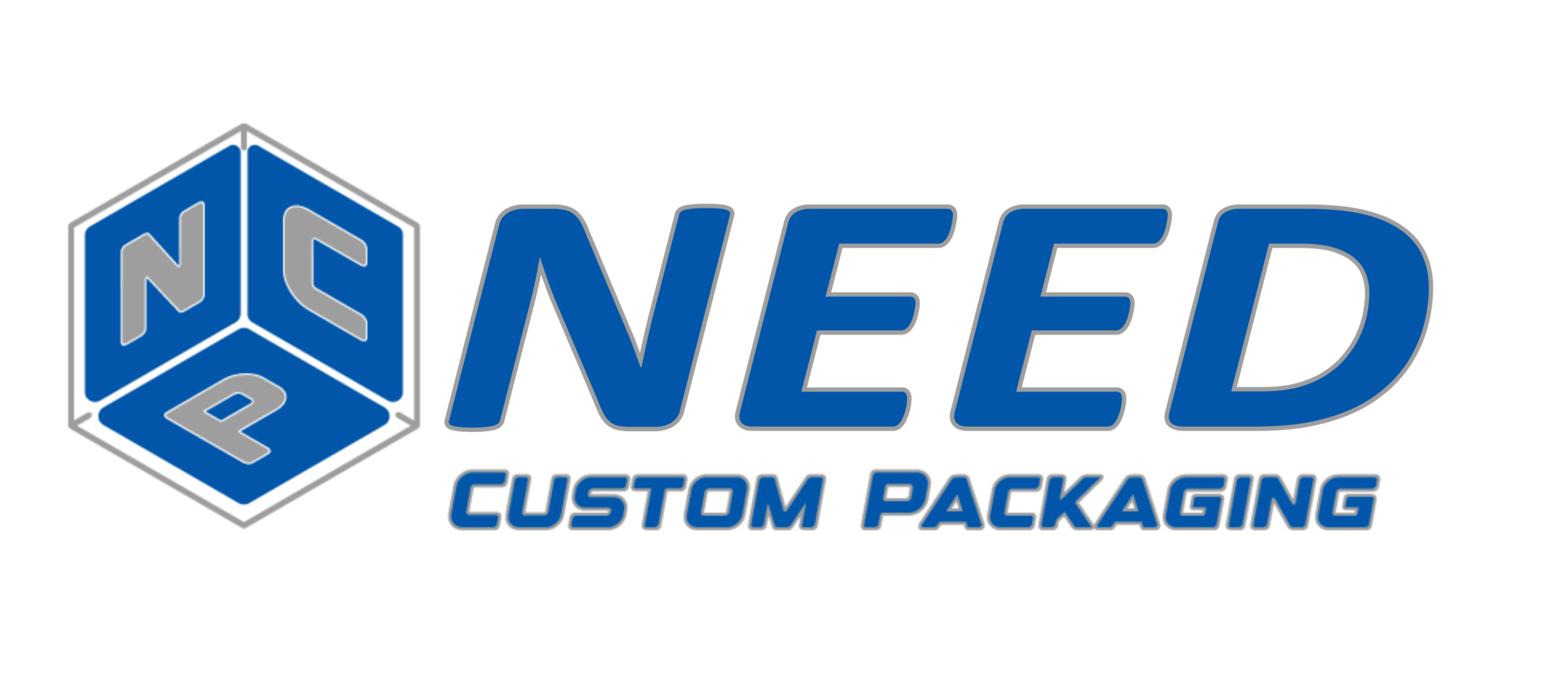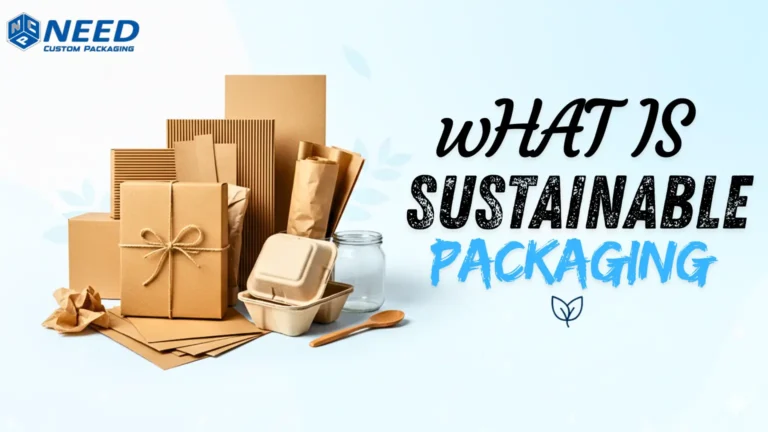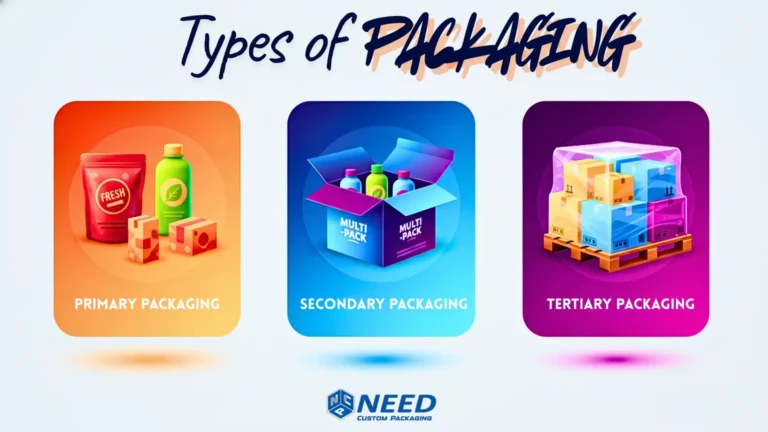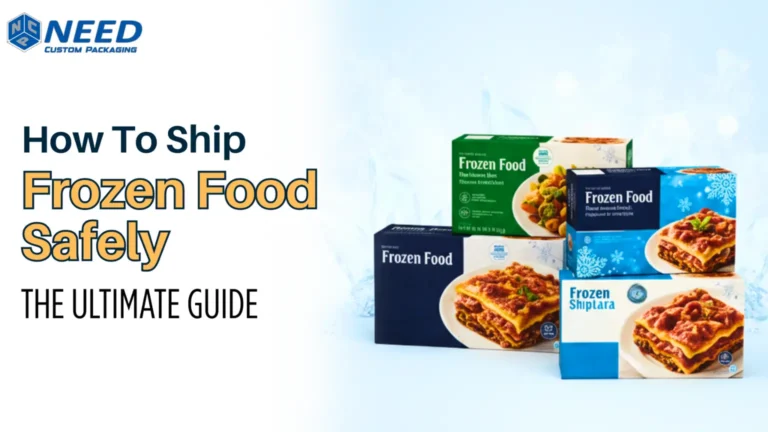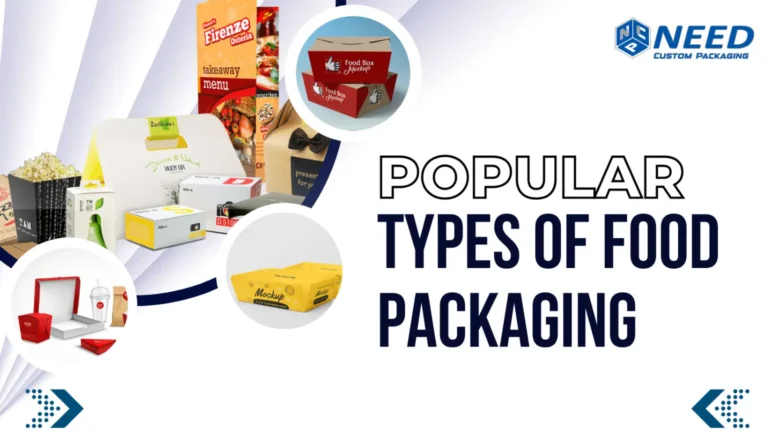Ever picked up a product just because the packaging looked trustworthy or put one back because it didn’t? That’s the power of food packaging.
Before a single bite is taken, your packaging is already shaping the customer’s opinion. Looking good just doesn’t cut it anymore, especially in today’s market, where rules are tight and competition is more challenging than ever.
That’s why having reliable food packaging is essential to help you create one that’s not only attractive but also safe, compliant, and environmentally responsible.
In this post, I’m going to share the innovative essentials from FDA regulations and safety standards to smart material choices and expert tips so you will deliver not just great food, but lasting consumer trust.
What is Food Packaging?
Food packaging is the process of enclosing food to protect it from contamination, damage, and spoilage while making it easier to transport and store. It includes:
- Primary packaging (direct contact with food)
- Secondary packaging (bundling for transport)
- Tertiary packaging (bulk handling)
In the packaging of food products, materials must meet health standards and be suitable for the specific type of food being packaged. It’s not just about aesthetics; it’s about compliance, preservation, branding, and convenience.
Biodegradable Food Packaging Types & Considerations
Sustainable food packaging has evolved from a passing trend into a fundamental requirement for businesses and consumers alike.
As awareness of environmental issues grows, the demand for packaging solutions that minimize ecological impact is soaring.
Let’s explore the various eco-friendly material options that are increasingly being integrated into the food packaging process.
Plastic (LDPE/HDPE):
Among the notable alternatives to traditional plastics are biodegradable plastics, which are often made from renewable resources such as cornstarch or sugarcane.
These innovative materials are designed to decompose more readily in the natural environment, thereby significantly mitigating landfill overflow.
By promoting a lighter ecological footprint, they contribute to a cleaner planet and a more sustainable future.
Glass:
Glass containers are 100% recyclable and do not leach chemicals, making them ideal for sauces, jams, beverages, and baby food.
Additionally, glass and metal containers are becoming increasingly popular due to their recyclability and ability to preserve food without the need for additives.
These materials not only protect the product but also contribute to a circular economy, as they will be reused or recycled indefinitely.
Water-Soluble Plastic:
Crafted from polyvinyl alcohol (PVA), this cutting-edge material offers an eco-friendly solution by dissolving completely in water, leaving no residual waste behind.
This unique property makes it particularly valuable for packaging instant food pouches and single-serve products. It is safe, non-toxic, and eco-conscious. Still emerging in the food packaging process, but it’s gaining attention among sustainability-focused brands.
Cardboard/Paperboard:
Recycled paper and cardboard are also gaining traction, as they require fewer resources to produce than virgin materials.
Utilizing recycled content helps decrease deforestation and lowers greenhouse gas emissions associated with manufacturing.
Affordable, printable, and biodegradable, it’s widely used for packaging food products like cereals, snacks, and baked goods.
Foil & Laminates:
Aluminium foil, along with multi-layer laminates, creates a flawless airtight seal. Additionally, this is exceptional for preserving the rich aroma and vibrant flavors of coffee and tea.
It is also effective in maintaining the freshness of pet foods. This innovative packaging solution effectively locks in the delicate nuances of taste, ensuring every sip or bite is as delightful as intended.
Bamboo:
Introducing a revolutionary biodegradable packaging material. It combines exceptional durability with sustainable renewability.
Moreover, this material is ideal for discerning eco-conscious brands. These are brands that prioritize both quality and environmental responsibility.
This innovative solution not only protects products with its robust design. It also reflects a commitment to a greener future.
It is the perfect choice for brands aiming to stand out in the market while minimizing their ecological footprint. Used in trays, containers, and cutlery.
Step-by-Step Food Packaging Process
When you think about food packaging, you might imagine just wrapping things up to keep them from spilling. But it’s much more than that!
The process of packaging food is carefully planned to keep products safe, fresh, and ready for you to enjoy. Every step in the packaging journey is crucial for ensuring the food is safe to eat.
Step 1: Choosing the Right Materials
The first step in packaging is picking the right materials. This depends on the type of food—whether it’s wet or dry, hot or cold—and how long it needs to stay fresh.
For example, bread requires packaging that allows air to pass through, while frozen foods require materials that prevent moisture from escaping.
Companies must also consider rules set by the FDA, environmental regulations, and the strength of the necessary packaging.
Selecting the wrong materials will spoil the food, lead to contamination, or result in legal issues.
Step 2: Design & Branding
Next, your packaging is like a first impression for customers. The colors, fonts, and images you choose tell a story about your brand.
Good quality printing makes the packaging look professional. It’s also essential to include necessary information, such as barcodes, nutrition facts, and batch numbers.
Packaging that aligns with your brand’s values will promote trust and encourage customers to make repeat purchases.
Step 3: Filling & Sealing
This part is performed by machines that help maintain cleanliness and consistency. There are methods, such as vacuum sealing and heat sealing, that protect food from spoiling. Proper sealing is crucial for preserving food freshness and minimizing waste.
Step 4: Labeling
Labels are crucial and must meet FDA packaging requirements. If they’re not done right, it will result in fines or even recalls. A good label includes:
- The product name and brand
- The weight of the product
- Nutrition information
- List of ingredients (in order from most to least)
- Allergen warnings
- Manufacturing and expiration dates
Step 4: Shipping
The final step is to prepare the packaged products for shipping. This involves placing them in larger boxes or containers to protect them during transport.
Companies often utilize innovative technologies, such as QR codes, to track their products in real-time while they’re in transit. Good packaging helps save on shipping costs and prevents damage to the food.
Most Common Food Packaging Formats in the Industry
Food packaging is more than just aesthetics; it’s essential for maintaining the freshness, safety, and appeal of products.
The food industry employs a range of packaging formats, from sturdy boxes to sleek pouches, each tailored to meet the specific needs of different foods and customers.
In this section, I will explore the most commonly used food packaging styles that dominate today’s shelves, highlighting the unique advantages of each one.
i) Boxes
These potent Food Boxes are not just practical; they are the ideal choice for safeguarding dry, shelf-stable foods, such as pasta, cereal, and granola bars.
Their creative design optimizes stacking and storage efficiency, making them indispensable in both retail and home environments.
Made from recyclable paperboard or corrugated cardboard, boxes offer exceptional structural integrity.
They provide an excellent surface for vibrant, eye-catching branding. This combination enhances product visibility and appeals directly to consumers.
ii) Wrappers
For consumers on the move, wrappers are the ultimate solution. Perfectly designed for a range of snacks, including snack bars, candy, baked goods, and fast food, these single-use packages offer unparalleled convenience.
Constructed from lightweight plastic films or foil laminates, they provide an effective barrier to maintain freshness and quality.
By simplifying portability, wrappers cater to the lifestyle of busy consumers, making them a necessity in today’s growing world.
iii) Tins & Cans
Tins and cans are the ideal of reliability in food packaging. Perfect for a variety of products, including canned vegetables, soups, seafood, and beverages, they shield contents from light, air, and bacteria.
This powerful protection ensures a long shelf life and guarantees food safety through rigorous tamper resistance.
Equipped with BPA-free linings, tins, and cans prioritize consumer health while maintaining the highest standards of food integrity, making them a trusted choice for discerning shoppers.
iv) Bottles
Bottles are versatile powerhouses in the packaging spectrum, expertly catering to a wide range of products, including juices, dairy products, sauces, and oils.
Available in a variety of materials, including PET, HDPE, or glass, these containers offer outstanding resealability and provide an attractive canvas for striking branded labels.
Their elegant designs not only facilitate easy pouring and storage but also raise the consumer experience, making them a preferred option for those who appreciate convenience and quality.
v) Polythene Bags/Trays
Polythene bags and food trays are champions of freshness and convenience, ideal for packaging fresh produce, frozen foods, and meats.
Their lightweight, moisture-resistant qualities make them a formidable choice for preserving food quality.
Combining efficiency with advanced vacuum-sealing technology, these packaging options lock in flavor and extend freshness, ensuring consumers receive top-notch products every time.
vi) Paperboard Cartons
Sustainability meets functionality in paperboard cartons, which are highly considered for packaging eggs, milk, ice cream, and beverages.
Their eco-friendly, biodegradable nature makes them a responsible choice that minimizes environmental impact.
Additionally, these cartons will be laminated for increased durability and liquid resistance, ensuring that they secure the quality of the contents while appealing to environmentally conscious consumers.
vii) Flexible Pouches
Flexible pouches like mylar bags are revolutionizing the packaging landscape, especially for baby food, pet food, and single-serve items.
Their innovative design combines space-saving convenience with lightweight construction, making them a top choice for modern consumers. The resealable feature ensures ease of storage and consumption while preserving freshness.
By reducing transportation costs and enhancing product longevity, flexible pouches are not just a wise choice—they are a testament to the future of effective and responsible food packaging.
Why Do Businesses Use Food Packaging?
Food packaging is more than just a way to hold your product. It is essential for your success. Packaging keeps your food fresh and safe, meets legal requirements, and attracts customers.
Think of packaging as your brand ambassador—it communicates important messages about your product even before someone tastes it.
So, why do innovative businesses focus on food packaging? Let’s explore the key reasons.
Keeping food Fresh: Effective packaging protects food from air, germs, and moisture, prolonging its shelf life, like vacuum-sealing meats or using nitrogen in snacks.
When customers trust the freshness, they are more likely to make repeat purchases.
Ensuring Hygiene: Quality packaging minimizes the risk of contamination during transport. It safeguards food from dust, pests, and handling, particularly for ready-to-eat meals and perishables.
Following the Law: Sticking to regional food packaging laws and regulations is mandatory. Non-compliance will result in fines or product recalls, making regular checks crucial.
Enhancing Customer Experience: Attractive, well-designed packaging makes products exciting and fosters a connection with the brand.
Consumers prefer resealable, eco-friendly options that offer clear information, often leading to impulse purchases.
Common Packaging Challenges Food Businesses Face
No matter how large or well-known a food brand may be, challenges are always present. Companies must keep up with consumer demands.
They must ensure that every product meets the highest quality standards. They must manage complex supply chains and handle ever-changing regulations. It’s a continuous balancing act; brands face pressure to innovate.
A single mistake, such as failing to include a warning about allergens, will lead to a costly recall.
So, staying ahead of these challenges is not just smart, it is essential. Some common challenges are as follows:
1) Material Shortages
Global supply disruptions have impacted the availability of materials such as aluminium, paperboard, and PLA bioplastics.
This has led to soaring prices and delays in product launches. As a result, brands are now seeking local sources for custom food packaging boxes.
2) Changing Regulations
Keeping up with evolving FDA food packaging requirements and international standards is a challenging task.
For instance, bans on PFAS and restrictions on plastic usage are increasing. Companies need to invest in legal advisors or compliance tools to stay informed and compliant.
3) Shelf Life
Packaging errors, such as incorrect seals or poor-quality material,s will cause food to spoil prematurely.
This results in customer complaints and inventory loss. It is advisable to use testing labs to validate the shelf life of products under realistic conditions.
4) Consumer Expectations
Today’s consumers demand biodegradable, convenient, and innovative packaging solutions. Brands must find a balance between sustainability and performance. Incorporating QR codes or augmented reality will enhance digital engagement.
For Example, A bakery chain had to reprint 10,000 packages because their product weight was misrepresented by 1.5 ounces, violating food packaging regulations and resulting in fines.
Packaging Guidelines & FDA Requirements You Need to Know
When it comes to packaging, the FDA has specific rules that prioritize the safety of consumers and provide clear information:
- Use Safe Materials: Make sure the materials used for packaging do not let harmful chemicals seep into the food.
- Labelling Requirements: Display critical information on the packaging, such as nutritional facts, allergens, ingredients, expiration dates, and details about the manufacturer.
- Traceability: Include lot numbers and batch codes on your products. This helps in case there’s a need to recall a product.
- Tamper-Proof Packaging: This is especially important for products like baby food, medicines, and drinks to ensure they haven’t been opened or altered.
Remember: Ignoring these rules results in your products being removed from stores, potential legal issues, or even harm to consumers.
Conclusion:
Packaging is more than just wrapping; it’s a key part of your business strategy. When done well, it builds trust with your customers, keeps food safe, follows the law, and boosts your brand’s visibility.
If you’re considering launching a new product or updating an existing one, remember that smart packaging of food products is an investment in the future, not just an expense.
Invest in the Right Packaging Strategy:
Partner with industry experts to develop packaging that not only meets compliance requirements but also captivates customers!
Whether you’re looking for sustainable packaging options, better branding, or just guidance on FDA food packaging requirements, Need Custom Packaging is your one-stop solution!
Invest in packaging that reflects your brand and meets all current regulations, with expert assistance.
Frequently Asked Questions:
Q1. What is the central role of food packaging?
The primary role of food packaging is to protect food from physical, chemical, and microbial damage while facilitating safe storage, transportation, and marketing.
Q2. What are the rules of food packaging?
Rules for food packaging include using food-safe materials, providing accurate labeling, declaring allergens, including expiration dates, and complying with FDA/USDA or local health codes.
Q3. What does federal law require on food packaging?
The Federal law mandates clear labelling, nutritional facts, allergen information, and the use of approved packaging materials.
Q4. What are the 5 requirements of a food label?
The five requirements of a food label include:
- Product name
- Net quantity
- Ingredient list
- Nutritional facts
- Allergen information and manufacturer details
Q5. What are the FDA requirements for primary packaging?
Primary packaging must be non-toxic, protect the integrity of the food, and support traceability through proper labelling.
